High protein diets have been popular for over 100 years. Every few decades they are repackaged under a new name, capturing the imaginations of yet another generation of hopefuls. Their main marketing tool is quick and long term weight loss – and indeed, at first glance, that seems to be exactly what is delivered. However, there is also a dark side to these diets. In this post, we look at some high protein diet FAQs.
A diet by another name
High protein diets are characterised by being low in starchy carbohydrates more than by the percentage of protein.
This chart shows the how a high protein diet differs from the recommendations of the American Dietetic Association in terms of protein and carbohydrates:
| High Protein Diet | Dietary Guidelines | |
| Protein | 27 – 68% calories | 10-35% calories |
| Carbohydrates | 10 – 30% calories | 45 – 65% calories |
The reason the Government Dietary Guidelines recommend these breakdowns is that fewer carbohydrates than this cause metabolic and hormonal changes which leads to short term side effects and long term organ dysfunction. The government does not recommend more carbohydrates because they are trying to drive up wheat and vegetable sales, but because that is what the science shows is necessary for a properly functioning body.
Diets which recommend these higher protein levels are:
- Paleo
- Atkins
- South beach
- Primal
- Zone
- Protein Power (Michael & Mary Eades)
- Sugar Busters
- Amway (TrimBodySystem)
- Dukan
The ketogenic diet is sometimes seen as ‘high protein’, but it is actually higher fat and even lower carbohydrate. Some high protein diets allow up to 150g of carbohydrates, whereas a ketogenic diet will rarely allow more than 50g carbohydrates daily.
How to tell a high protein diet
So far we have seen that a high protein diet is actually a low carbohydrate diet.
Carbohydrates are plant foods. This includes all vegetables, all fruit, grains (like rice, bread, pasta, quinoa, oats), beans and lentils. Carbohydrates also include processed foods like sugar and white flour. Dairy foods also contain carbohydrates so some high protein diets omit them.
Plant foods contain the densest amounts of vitamins and minerals on the planet. This means that by eating a low carbohydrates diet, you severely restrict the most healthy foods that exist. For a time, restricting the most unhealthy foods (the processed foods) makes a person feel good as the body can start cleaning junk out. But in time, emphasizing those less healthy non-carbohydrate foods in the diet – begins to tell.
Here is a summary of high protein diet foods:
| YES | NO | |
| Non-starchy vegetables | * | |
| Starchy vegetables (corn, potatoes) | * | |
| Fruit | (limited) | |
| Nuts/ seeds | * | |
| Legumes | * | |
| Grains | * | |
| Meat | * | |
| Dairy | (some diets) | * |
| Eggs | * |
Isn’t high-protein a human’s natural diet?
The high protein diet is based upon a story. “A long, long time ago, when people lived in caves….” these distant palaeolithic and neolithic ‘hunter-gatherer’ ancestors apparently ate a high animal diet – and were healthier for it. This is a myth.
Most anthropologists agree that early man ate more like the apes – a plant-based diet. Most hunter-gatherer societies of recent years are actually more ‘gatherer’, with only a little ‘hunter’. Many such societies eat up to 80% root vegetables, green vegetables or fruit, with only small amounts of animal foods such as insects, lizards, small trapped fish and the very occasional large hunting catch.

The human body is not designed to run animals down day after day. Before the rifle was invented, catching enough larger animals to feed a tribe consistently was unreliable and virtually impossible. Tribal people generally depended on what plants they could grow or gather plus small catches (as mentioned). Meat in quantity was a special event and took an inordinate amount of energy and risk to acquire.
Basing your health upon the premise that millions of years ago, humans may have eaten one thing or another, and disregarding what the science actually shows about what is healthy and what is not now, has nothing at all to do with good health. It is irrelevant what people ate thousands of years ago to survive.
We have an abundant food supply now and mere survival is not the goal of most Westerners. Our goal now is living healthy to old age. That differing goal requires a very different approach.
If all you want to do is live long enough to reproduce, you can eat what you want. Hopefully, we have learned more about nutrition over the centuries, and that is what really matters for health.
Isn’t all that protein good?
A diet that encourages more meat has instant appeal.
We all know that eating more meat results in higher protein in the diet. More protein = the ability to grow a lot more muscle.
Despite the Western world’s love affair with protein in the 1940s and ’50s, we now know that eating more animal protein increases the levels of insulin-like-growth factor-1 (IGF-1) in the blood. Why does this matter? Because IGF-1 is a hormone designed to send messages to the organs to grow.
However, the ‘grow’ message is not all good when you are already a full grown adult.
In the 1940s science discovered exactly how much protein we need to take in to maintain our body weight, replace old cells, heal damaged cells, produce all the proteins needed for our metabolism to keep chugging along and keep the immune system functioning well. This was made into a “recommended daily intake” (RDI), or “recommended daily allowance” (RDA) in some countries.
The RDI for protein is about 46g/day for women and about 64g/day for men (up to 70 years old). This level is easily obtained without eating more meat. In fact, you can quite easily reach this protein level on a plant-based diet without eating ANY meat.

When we eat above the RDI of protein, the body has extra building blocks. IGF-1 hormone sends the cells messages to start using those building blocks to grow – and some of that growing has been shown to be tumours growing.
Raising animal protein levels to 20% of the diet stimulates tumour growth at all its stages. Getting animal protein below 5% of the diet is the only way to switch tumour growth back off. High protein diets commonly have people eating animal protein at levels of 50% and even 70% of their diet or 2 – 3x the RDI.
But my high protein diet includes a big salad – lots of greens!
High protein diet promoters these days say it’s all about the vegetables. Everyone knows you are a charlatan if you say otherwise. But is this the reality of high protein diets?
A healthy portion size of meat is the size of the eater’s palm. You cannot sustain your energy levels on non-starchy vegetables (such as salads) and only a palm-sized portion of meat in a meal – while eating no starches like rice, bread or beans. That does not provide enough calories. You would soon feel weak and lethargic.
Since grains and beans are not allowed on high protein diets and even sweet potatoes are limited if not condemned totally, the only choice you then have in order to get sufficient calories is to either eat more fat or more meat, fish or eggs. Alternatively, you can use stimulants like coffee or dark chocolate to give keep you going. These options are the reality of high protein diets.
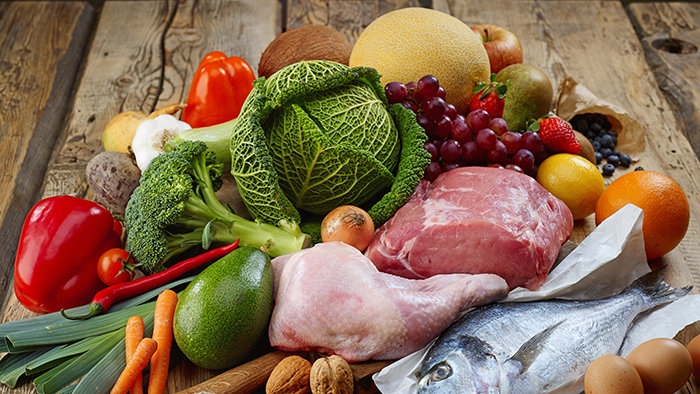
To summarise, to get enough energy/calories from a high protein diet to get through the day while not eating energy-rich starchy foods like grains, beans or starchy vegetables (corn, potatoes), you must either
- eat more fat
- eat more meat, eggs or fish – or
- use stimulants (coffee, dark chocolate, energy drinks/meds)
But a large salad or steamed vegetables three meals a day with a palm-sized portion of meat is still over the RDI of protein. But if you cut back meat to the RDI and only eat the vegetables without starches, you’ll be hungry. The maths of a healthy high protein diet simply doesn’t work. An unhealthy amount of animal protein must be eaten, or a lot of fat or stimulants are needed. And in each of these cases, health is affected negatively.
What about free-range, wild or organic meat?
Everyone agrees that eating meat with fewer chemicals and hormones in it is better. However, eating organic or grass-fed meat does not mitigate the effect of eating too much meat.
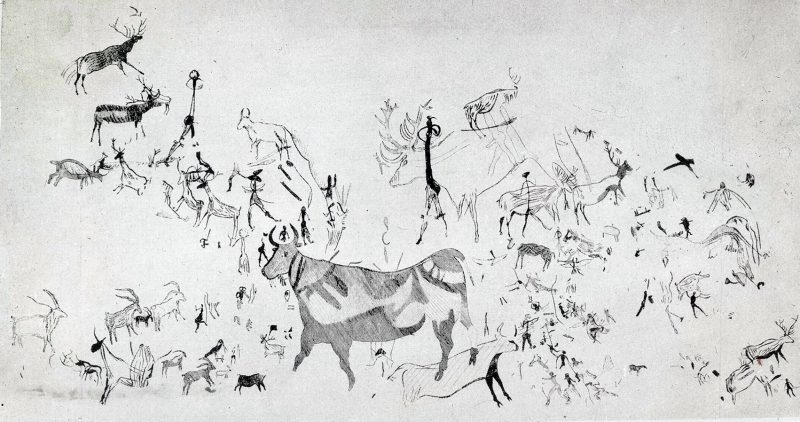
The problem with meat – with too much meat – is not primarily whether it comes with chemicals. The issue with health and meat is that it contains:
- too much protein
- excessive heme-iron
- too much saturated fat
- no anti-oxidants
- no fibre
- precious few phytonutrients
Organic or grass-fed meat contains the same protein and iron and the same lack of fibre, antioxidants and phytonutrients as non-organic. Harvard Chair of Nutrition, Walter Willett, says, “There is no safe level of red meat, the same as there is no safe level of radiation”.
High iron is one of red meat’s primary marketing points! But excess iron causes oxidative stress (this means that it ‘rusts’), requiring more anti-oxidants to mop up the resulting free radicals before they damage DNA.
Saturated fat is also a real problem with meat. Meat cannot be separated from the fat as fat is in each muscle. Read my <blog post> on this to find out how saturated fat damages. Studies that conclude that saturated fat is not damaging to the body compares processed foods with saturated fat. Processed foods are actually worse, but saturated fat is as bad as always. More saturated fat results in higher heart disease rates, higher diabetes rates and higher cancer rates.
Won’t starches make me fat?
Every civilisation on the world has been built on the back of a starchy food – a grain, a potato or starchy vegetable, or a legume.
- Asian civilisations – rice
- Rome – wheat and barley
- Arab Empires of the Middle Ages – barley and lentils
- Northern European civilisations – rye and wheat.
- Central American (Aztecs) – beans and pumpkin
- South America – potatoes
- North American Indians – corn, beans, pumpkin
- African – cassava, plantain teff, beans, barley
Obesity has not been a widespread problem in any of these civilisations. It is a modern problem caused by processed foods combined with a more sedentary lifestyle. Wholefood starches do not make people fat.
You can read more <here> about the longest living people on earth from all continents. Their diets all include plenty of starchy foods.
Do high protein diets cause reliable weight loss?
High protein diets do cause weight loss – but the reasons are not usually healthy ones. Read my post <here> on WHY the body rapidly drops in weight after adopting such a diet.
In this recent diet trial, a ketogenic diet which was also high in protein, with animal protein at every meal, was compared with a vegan diet for weight loss and other markers of health. The vegan diet did much better. You can read the details at my <blog post> on the study.
What about the anti-nutrients in beans, lentils and grains?
Legumes are the most important dietary predictor of survival in older people of all ethnicities than any other food. Yet high protein diet promoters warn about their “anti-nutrients”.
In fact, these anti-nutrients protect from cancer and do good things for us. You can read about this in <this post> about how beans lower cholesterol, reduce diabetes risk and help prevent colon cancer and in <this one> on exactly what benefits phytates (supposedly an anti-nutrient) have on our health.
Grains with all their “anti-nutrients” have similar benefits.
For most people, anti-nutrients are nothing to be concerned about.
Is fruit bad for weightloss or diabetes?
Many high protein programmes recommend the limiting of fruit as it contains fruit-sugars. Nutrition science, however, disagrees. Societies that eat two or more pieces of whole fruit a day are the healthiest, and people eating fewer than two pieces of fruit a day are sicker of all causes, especially in the case of children. Worse, children eating little or no fresh fruit have higher disease rates even 20 years later. People who eat 3 – 5 pieces of whole fruit a day and an unprocessed, balanced, plant-centred diet do not tend towards weight gain.
What’s the best way to get protein?
If you’ve read this post this far, you know there are some real problems in eating too much meat to get your protein. You know you don’t actually need as much as many people eat. You may have questions on how to get the protein you need to repair or grow your body as much as it needs.
The main rule of thumb is to get most of your protein from plants. Plant protein does not have the same problems as animal protein.
Many myths about about plant protein, and the silliest is that plant protein is “incomplete”. This is completely and utterly incorrect. There is no science anywhere to indicate that plant protein is less ‘complete’ (contains fewer amino acids or a less useful amino acid balance) than animal protein.
If you have fallen for this myth, which then leads to a supposed need to ‘combine’ plant proteins, please get my free download from the pop-up form on this page. It will set your mind at rest once and for all about animal protein verses plant protein.
What if I need more protein for muscle gain?
Great question. To gain muscle, more protein is needed in order to oth repair the micro-tears in muscle from weight bearing exercise, as well as to supply building blocks for more muscle tissue.
This can easily be obtained from mostly or ALL plant-based protein, as the infographic below shows.
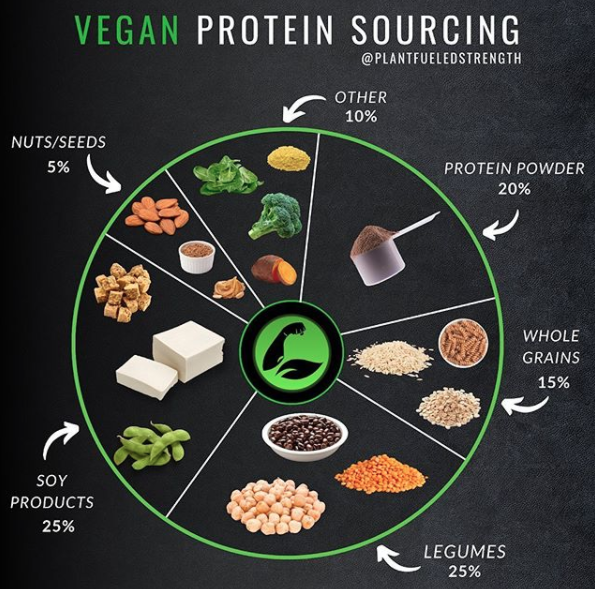
You can find out more on how to achieve protein for muscle gains safely and effectively from the Instagram of Devon Bennett, ‘plantfueledstrength’. Devon has a really informative science-based Instagram for plant-based bodybuilders and provides 15 minutes online consultations. Look him up!
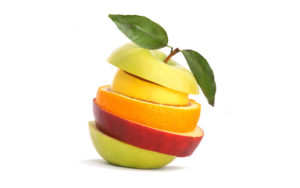
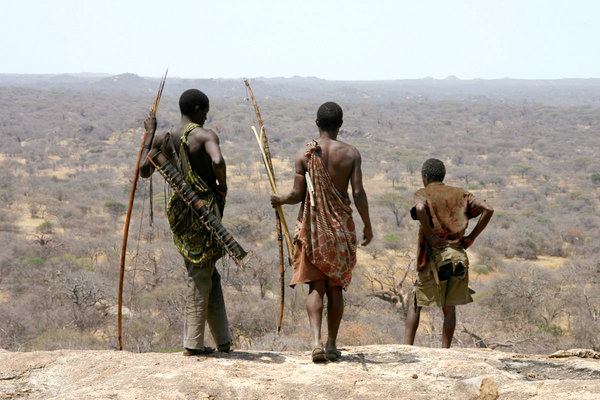
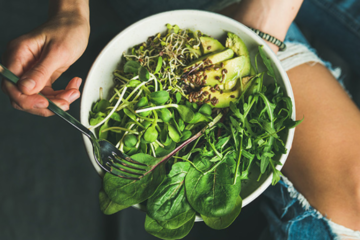
0 Comments